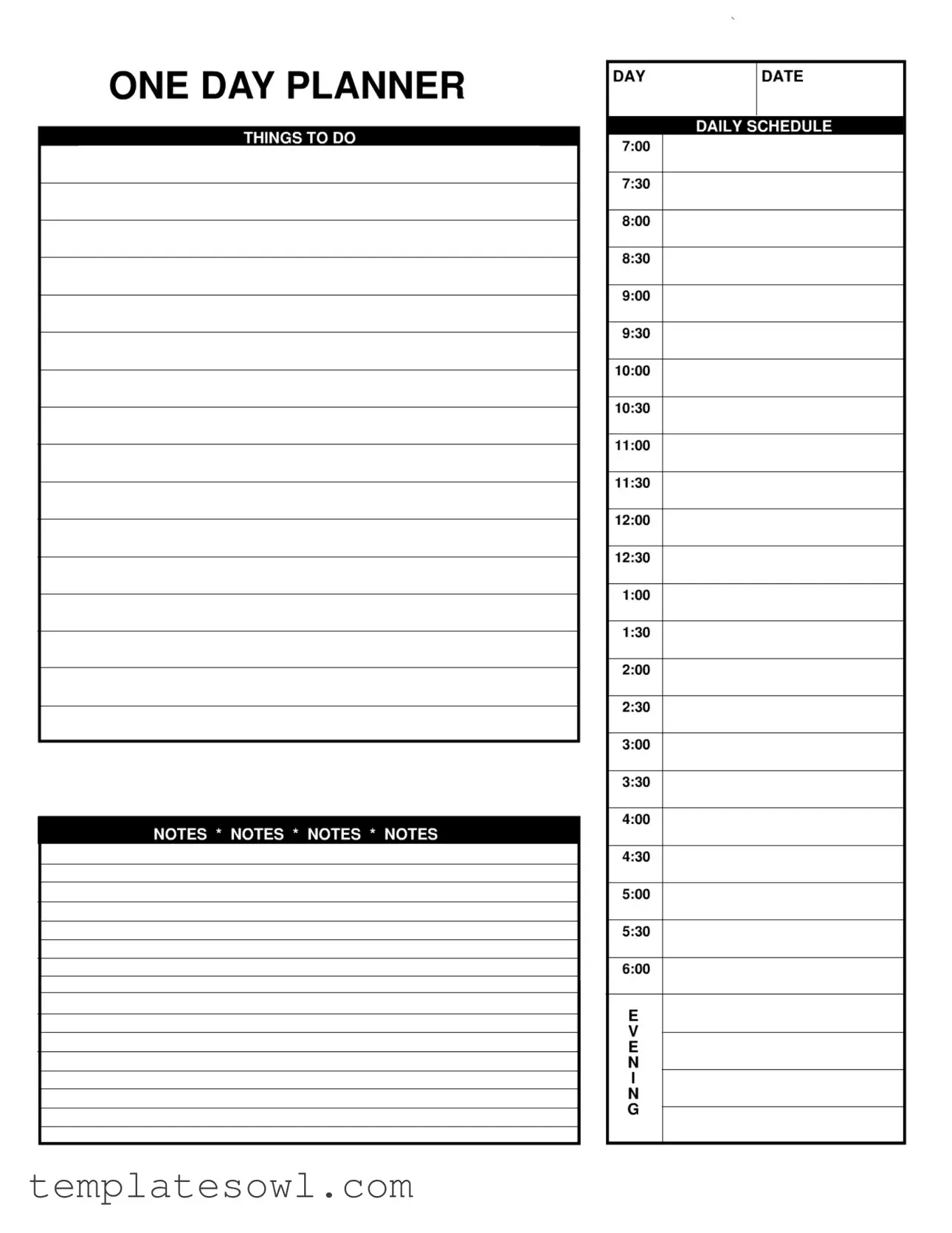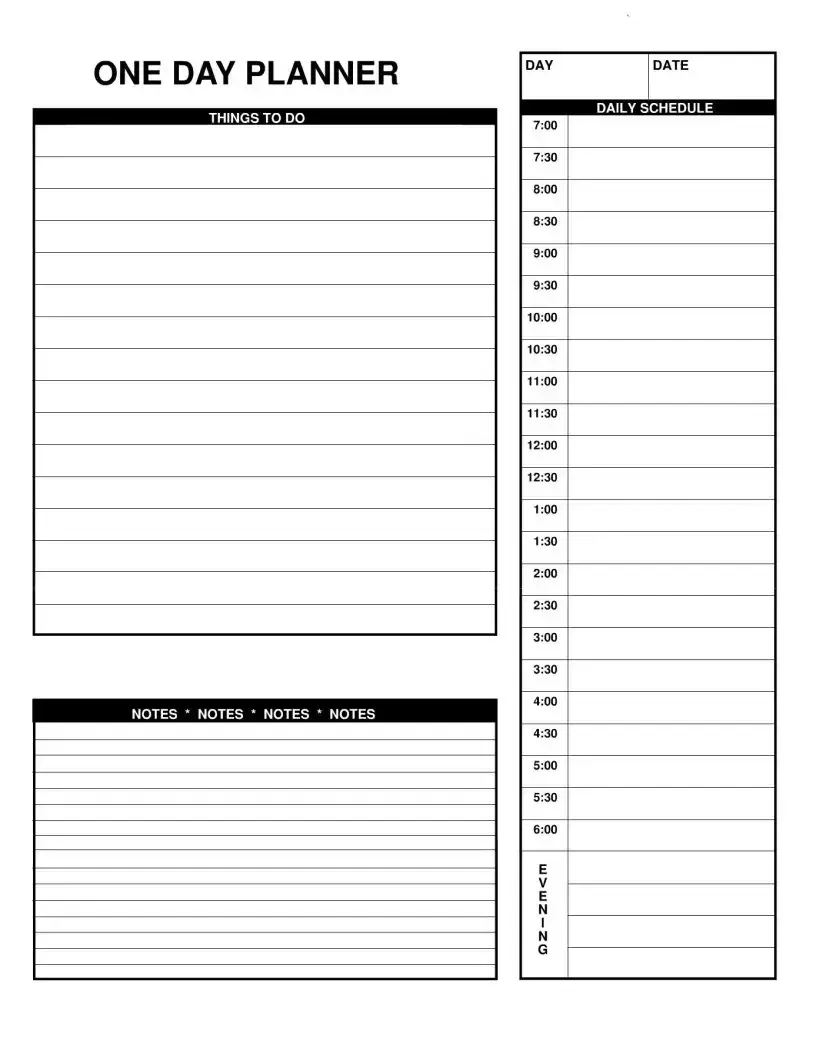What is the purpose of the Daily Planner form?
The Daily Planner form is designed to help individuals organize their daily activities. It provides a structured layout for scheduling tasks, appointments, and important notes throughout the day. This planner allows users to visualize their time effectively, ensuring that all necessary tasks are completed efficiently.
How is the Daily Planner form structured?
The form consists of several key sections: the date, a list of things to do, a daily schedule with time slots from 7:00 AM to 6:00 PM, and a notes section. Users can fill in their tasks in the “Things to Do” section, allocate specific time frames for each task in the daily schedule, and jot down any additional notes or reminders in the designated notes area.
Can I customize the Daily Planner for my specific needs?
While the Daily Planner has a standard format, it can be tailored to suit personal preferences. Users may choose to adjust the time slots, add more notes, or create their own sections to better fit their scheduling requirements. This flexibility allows for a more personalized planning experience.
Is there a specific time frame for filling out the Daily Planner form?
The Daily Planner form is primarily intended for daily use, meaning it should be filled out before or at the start of each day. Ideally, users should allocate time each evening or morning to review their previous tasks and plan for upcoming responsibilities, thereby maximizing productivity.
How can I effectively use the notes section in the Daily Planner?
The notes section is meant for jotting down reminders, additional tasks, or observations that might enhance the day's organization. This can include important deadlines, special events, or any follow-up actions needed. Utilizing this area effectively helps prevent oversight and assists in maintaining a clear focus throughout the day.
Is there a limit to the number of tasks I can write in the “Things to Do” section?
There is no strict limit to the number of tasks you can include in this section; however, it is advisable to prioritize tasks and keep the list manageable. Aim to focus on key objectives to avoid feeling overwhelmed and ensure that you can realistically complete your planned activities within your scheduled time.
What are the benefits of using the Daily Planner form consistently?
Consistent use of the Daily Planner form can lead to improved time management and productivity. It helps clarify daily priorities, reduces stress by providing a clear roadmap for the day, and fosters accountability. Over time, users may find they have greater control over their schedules and increased satisfaction in completing tasks.

